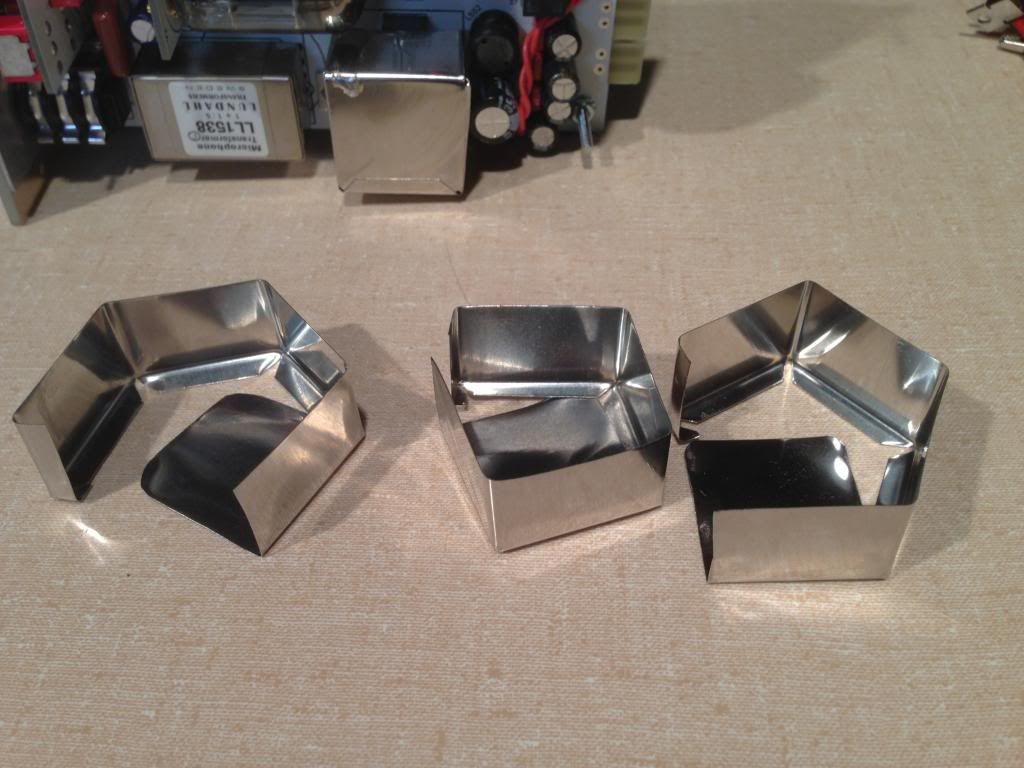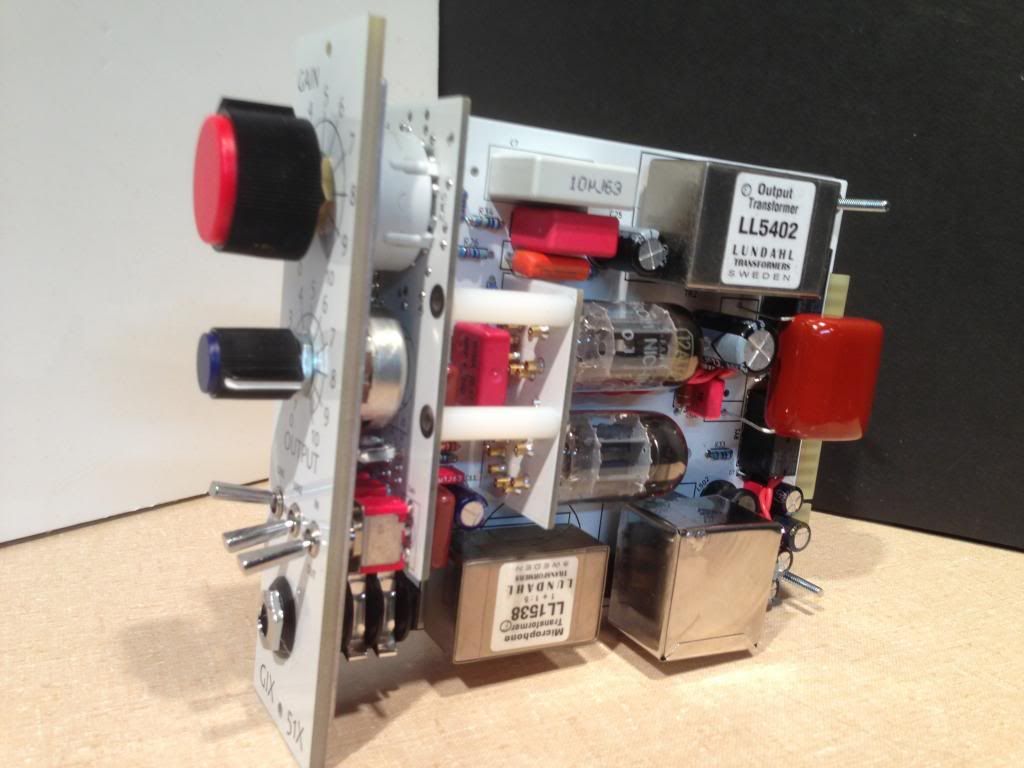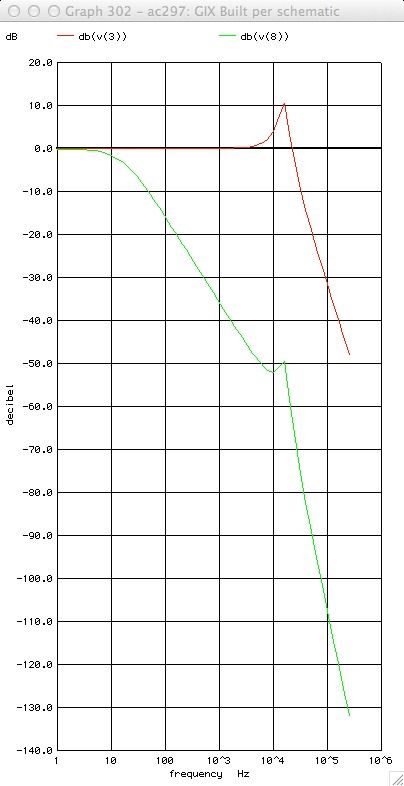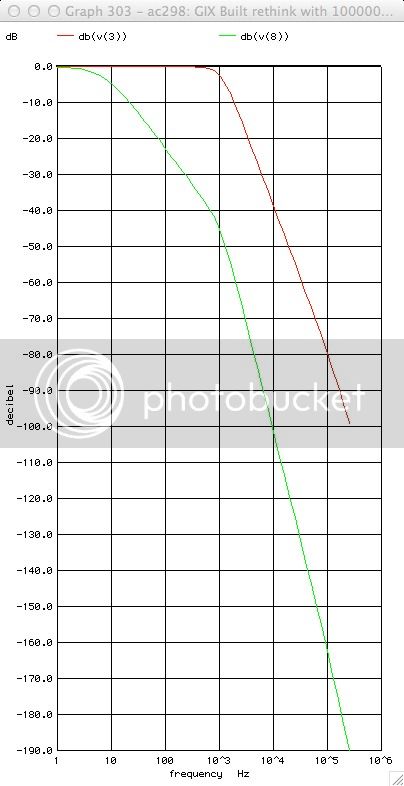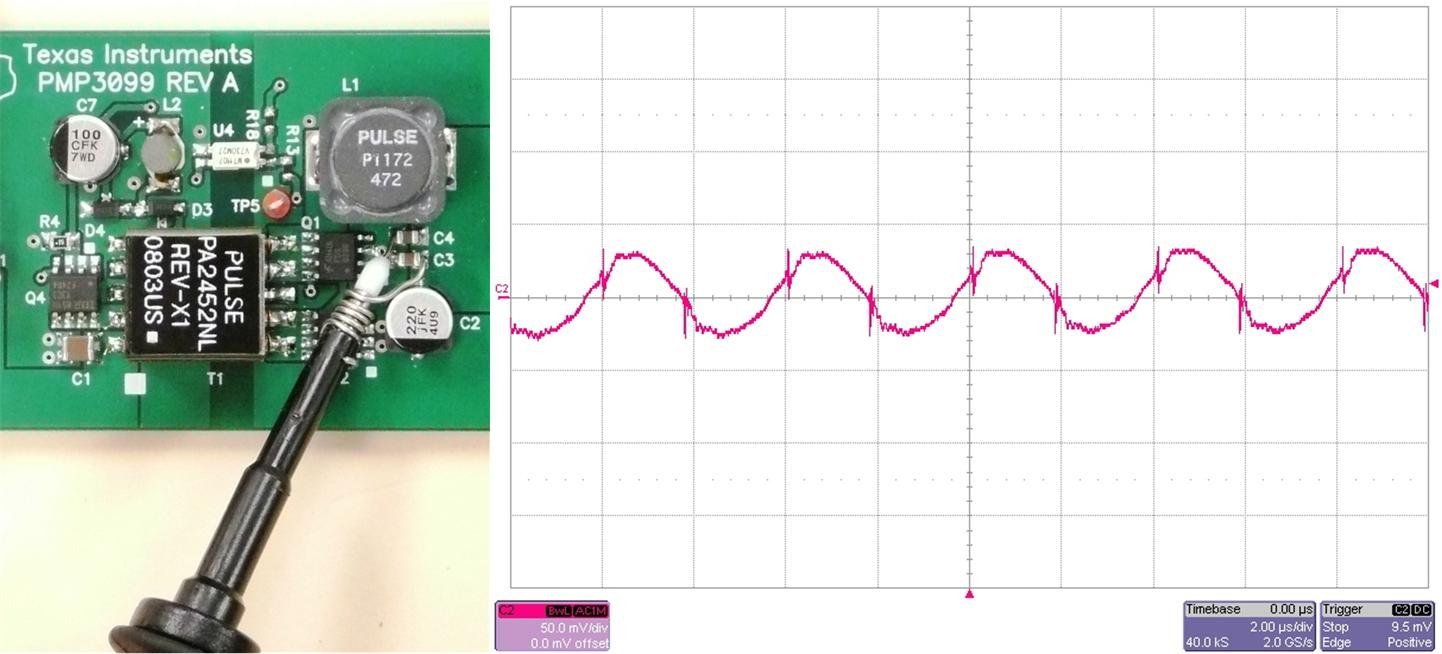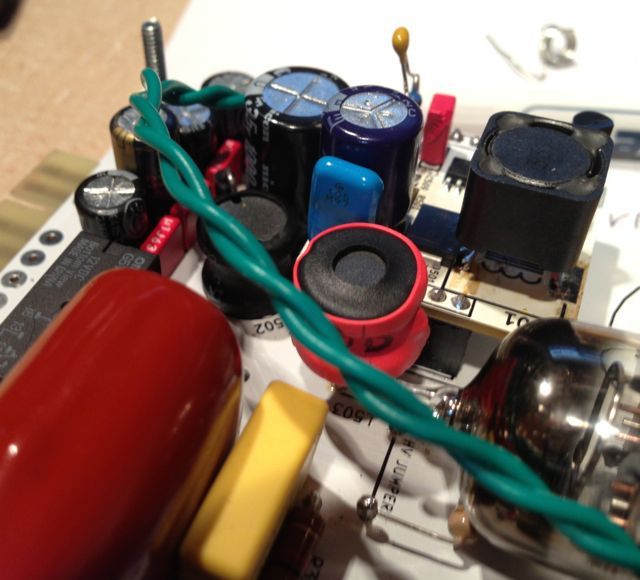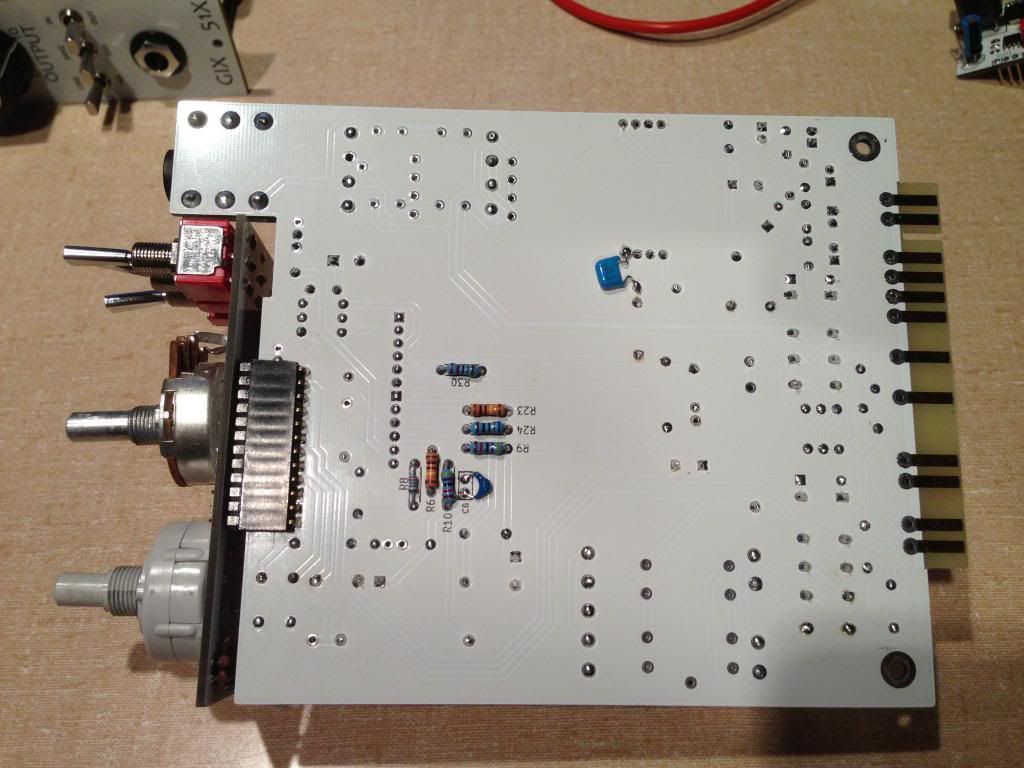Parts
I did my final build with the following:
L501 330uH (as originally specified) (Updated)
Rsense 0.250ohms (as originally specified)
L503 1200 uH Bourns 652-RLB9012-122KL
NEW CAP Tack a .1uf ceramic capacitor (350V) between the end of that inductor and the HV out on the boost converter on the back of the board.
HV Jumper 200ohms ( I used a 1/2 watt, I don't know why Gyraf specs the R31 at 2 watts, it sees 5-7 mA and has a 5 volt drop. What am I missing tube guys?) (update)
C507 22uf I used EKXJ351ELL220MJ20S, it fits fine.
C25 350V 22uf also fits EKXJ351ELL220MJ20S (update)
C25 350V 10uf 350V 10uf, if you want to be true to Gyraf design 647-UVY2V100MPD (HV card exceeds 250V on startup)
C503 350V 10uF 647-UVY2V100MPD (HV card exceeds 250V on startup)
C508 450V 1uF version RDED72W105MUE1C3A (HV card exceeds 250V on startup)
R502 300,000 ohms
R504 + R503 A single 1800 ohm resistor (measure these with a DVM, a small difference on this part makes a big difference in voltage)
R33 and R34 120 to 140 ohm to reduce current use
C509 I built mine with this omitted. I found it makes no difference. (Update)
Shield I put a shield on my HV boards, if you want I can upload a pdf template of it.
You can use a bigger resistor for the JV jumper and get better filtering, but I find it is fine for the noise frequencies present and it keeps the supply impedance low.
The smaller inductor was my bad idea.
I have been reading up on boost converters, and it turns out the ripple current produced by the power inductor is related to it's size as well, and on some of the inductors I was suggesting was getting as high as a few amps! (actually limited by saturating the inductor) That's why they were getting hot. We want to keep that number lower so that the ripple voltage is low and so that we don't get above the rating of the filter inductor (L503).
Last night I modeled our boost converter using the cooper and bussman guidelines document, and this table is a summary of that:
Inductor Vin Vout Iripple
330 24 245 0.410
68 24 255 1.998
180 24 255 0.755
330 24 255 0.412
680 24 255 0.200
820 24 255 0.166
1000 24 255 0.136
Note that the ripple current on my smaller inductors is much higher than the rating on the L503 inductor which is around 370mA. Furthermore the ripple current makes ripple voltage in the B+ voltage (we don't want that). That voltage is related to the ESR of the CAPs used to store and filter the pulses.
So really we want a larger inductor, but I tried them today, but I couldn't maintain high frequency, and 255V except with the 330 inductor. (The current ramp up on the larger inductors is slower, and the result is more efficient, but not enough energy get's stored if we run them at high frequency).
Actually you get a really quiet supply that works with a 0.120Ohm sense resistor and a 1000uH inductor, and it uses less amps from the GDIY 51x power supply, but it runs at 56Khz. It has lower ripple by half, and it sounded quiet.
The 330uH Inductor with the .250 sense resistor is good. It may be we can use a larger inductor, I am going to try out the next size larger and see if it works, but 680uH is too big.
The improvement that can be made is in the filtering. All the "design tips" documents on boost converters say you need to put an LC filter after the boost converter. In the schematic, that LC filter is formed by L503 with C507/C507. The general recommendation is to have the LC filter frequency at 1/10th the boost converter frequency, and this is where we have diverged from the recommended design. Our boost is running at around 15K, and our boost is running at around 100-120K.
Here are Spice models of the frequency responses at the Driver and Gain stage anode for the original schematic and one using the filter changes specified above. Red is the Driver Stage, Green the Gain Stage.
Note: There are other LC filter arrangements that work, but this one fits best. You can use much smaller inductor like a 22uf axial cap which fits pretty well across the top of the relay, but you still have to bypass it with a low ESR ceramic and that fits on the back, so I chose this approach. If anyone wants I can provide the various options.
Mea Culpa section:
#1) The LFO oscillation I noted in earlier posts
DOES NOT EXIST! it was an artifact of using an oscilloscope probe with a ground wire and clip. When I shorten the ground wire and clip as shown here, the problem goes away. This is just a bit of bare wire wound around the tip replacing the ground clip:
#2) The shield is not strictly necessary. What the shield was doing was preventing my scope from picking up the false signals that I was interpreting as LFO oscillation. But the field is strong and I am going to use a shield out of an abundance of caution.
(There should be a sheepish grin icon!) ;D Sorry.
Bruce




